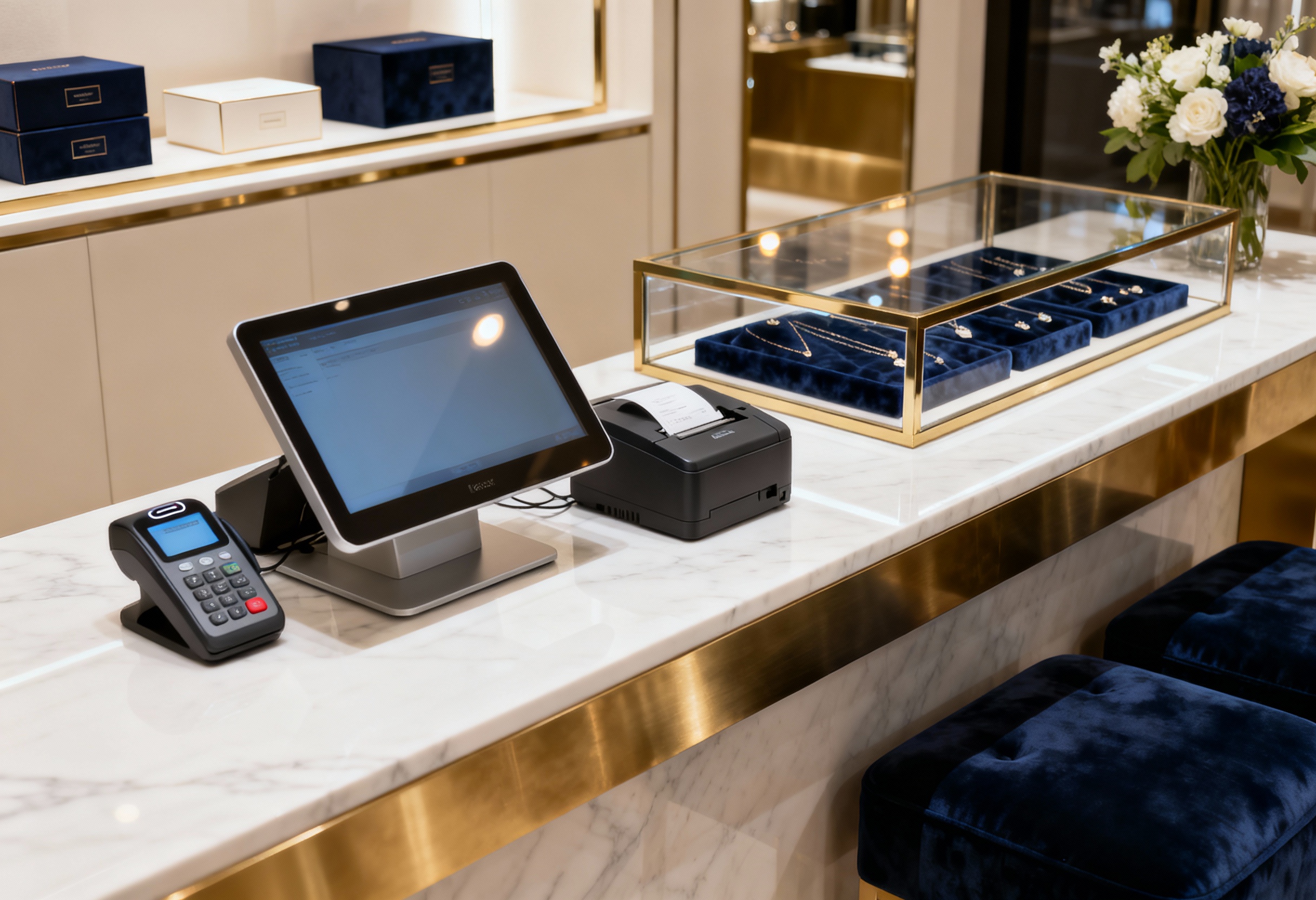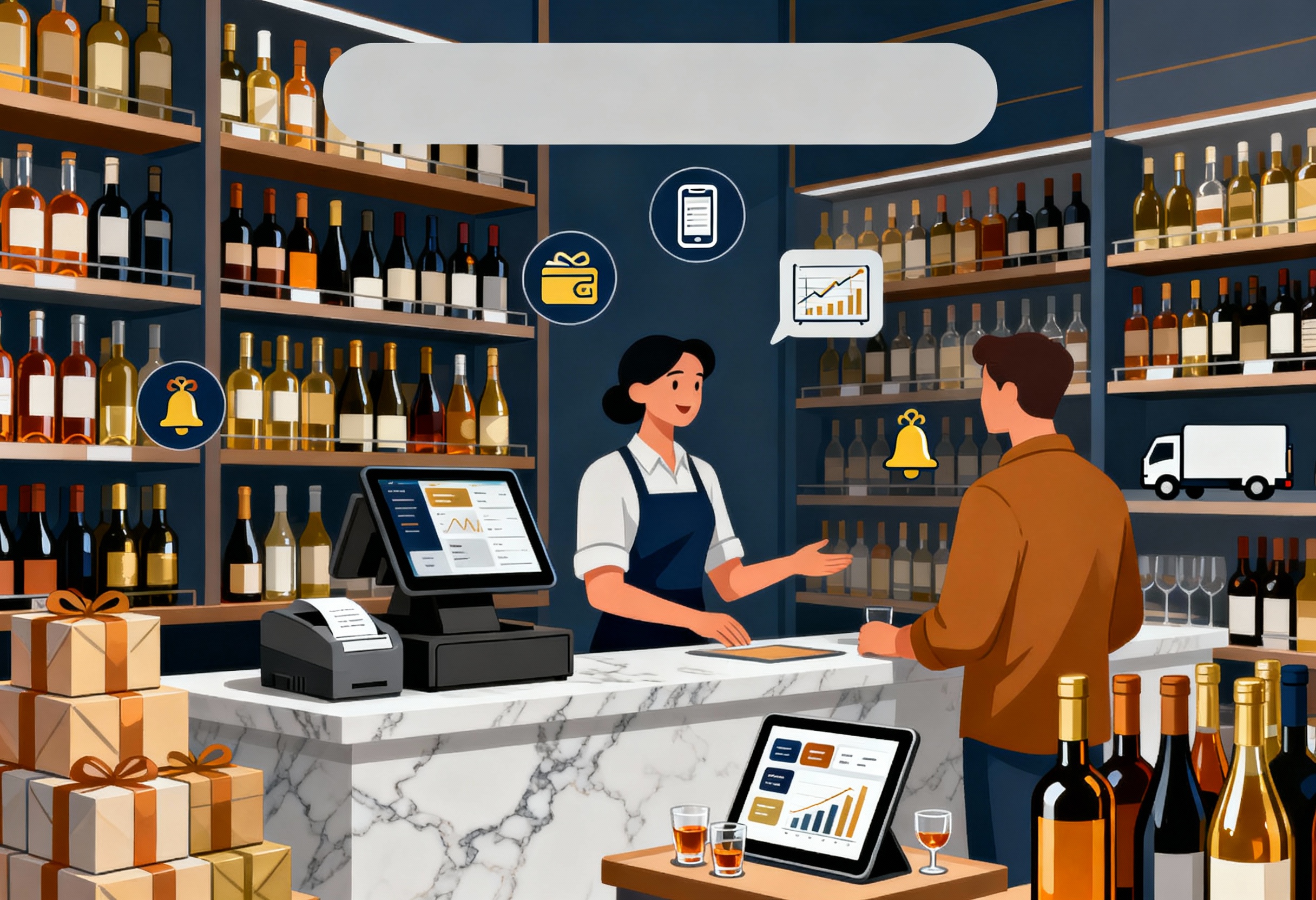Retail moves fast. Shoppers don’t wait, and neither should your inventory system. Whether you’re running a boutique or stocking shelves across stores, staying on top of your stock is the difference between a sale and a sorry shrug at the register. That’s where retail inventory management software makes a big difference. Let’s break down what it is, where it helps most, and what to look for when choosing the right one.
Highlights:
- Retail inventory management software helps track, organize, and control stock levels across your business in real time.
- The right solution connects all sales channels, supports multiple locations, and uses analytics to guide smarter buying decisions.
- Before choosing a system, weigh setup costs, key features, ease of use, integration options, and long-term vendor support.
What Is Retail Inventory Management Software? and Why Does It Matter?
Retail inventory management software helps you track products as they move in, out, and across your stores. It knows what’s in stock, what’s almost gone, and what’s not selling. The goal is simple: avoid dead stock, stop stockouts, and make sure the right items are always in the right place at the right time.
Many retailers still use spreadsheets or pen and paper. That might work for a weekend pop-up, but it can’t keep up with real-world demand. Manual systems are slow, clunky, and easy to mess up. A barcode typed wrong. A sale missed. Suddenly, a bestseller vanishes from your shelves.
Now compare that to a modern system. Automated inventory tools scan, update, and sync in real time. Does a product sell? It disappears from your inventory count instantly. You get low stock alerts, purchase order suggestions, and even forecast reports before busy seasons hit. No second-guessing. No surprises.
Retailers use this software for all kinds of things:
- Managing SKUs with dozens of colors or sizes
- Syncing stock between online and physical locations
- Tracking expiration dates for perishable goods
- Handling returns and restocks without double work
It’s not just for big chains, either. Small shops with growing inventory need it just as much. The difference shows up where it matters: at checkout, in customer satisfaction, and in your bottom line.
Common Retail Inventory Challenges and Smart Software Fixes
Inventory issues creep up fast. One bad count, one late shipment, and the whole system starts to wobble. Good retail inventory management software doesn’t just track what’s in stock. It helps dodge the most common mistakes before they happen.
- Overstocking and dead stock: It’s easy to over-order when demand is unclear. According to McKinsey, U.S. retailers were sitting on roughly $740 billion of unsold goods in 2022. This shows just how costly excess inventory can get. The right software spots slow movers and highlights unsold items. That means fewer wasted purchases and more room for top sellers.
- Unreliable manual tracking: Pen and paper can’t keep up. Errors build up. Stock counts drift off. Automated tools update inventory instantly with every sale, return, or delivery. There’s no second-guessing.
- Missed sales from stockouts: A shopper wants your best-selling product. It’s gone. Worse, you didn’t know. Inventory tools send low-stock alerts and suggest reorder quantities based on sales data. Add in the fact that overstocks, out‑of‑stocks, and returns already drain about $1.75 trillion from retailers worldwide each year, and it’s clear why prevention matters.
- Limited demand forecasting: Planning based on gut instinct or last year’s numbers won’t cut it. Smart systems analyze sales trends and seasonality to help forecast what’s likely to sell, so you’re prepared, not panicked.
Key Features Every Retailer Should Look For
Not every tool gets the job done. Strong retail inventory management software includes functions that save time, reduce waste, and keep operations sharp.
Real-time stock tracking
No more “let me check in the back.” With real-time tracking, you know exactly how much is on hand, what’s on the way, and what just sold. It updates instantly across all channels, so you’re never left guessing.
►►► Optimal solution set for businesses: Multi store POS, Next-gen POS, Inventory Management Software (MSI), Self Service, Automation, Backorders
Barcode scanning and automation
Manual entry is slow and risky. Barcode scanning speeds things up and improves accuracy. Whether you’re receiving shipments or counting shelf stock, it gets done faster. It also automates updates, so your system always reflects what’s actually on the floor.
Centralized product catalog
All product info in one place means fewer mistakes. Whether it’s a red dress in three sizes or a shampoo with two scent options, you manage every variant under one listing. It keeps your catalog tidy and your sales channels consistent.
Integrated purchase order and returns management
Ordering and restocking should be simple. The right system lets you create, send, and track purchase orders directly. Returns? Handled just as easily. The inventory updates automatically, with no manual edits needed.
Smart alerts and reorder points
Forget sticky notes and mental reminders. Set custom reorder levels and get notified before stock runs out. Some systems even suggest how much to reorder based on past sales, helping you avoid both shortages and excess.
Each feature keeps your shop running smoothly behind the scenes, so your team can stay focused on selling, not sorting spreadsheets.
Cloud-Based or On-Premise? Choose What Fits Best
Inventory systems aren’t one-size-fits-all. Some retailers need cloud access, others rely on in-house setups. Some want plug-and-play speed, others need tools tailored to their niche. What works for one shop might not suit another. The best pick depends on how you run your business and where you want to take it.
Cloud flexibility and access
Cloud-based POS systems let you check inventory from anywhere. Whether you’re at the store, working from home, or traveling, you stay connected. Updates happen in real time, and you don’t need a tech team to manage backups or updates. It’s a good fit for busy retailers who value speed, convenience, and mobility.
POS-integrated systems
Having your POS and inventory system work together makes a big difference. Every sale adjusts your stock count instantly. No manual updates. No mismatched data. Whether you’re restocking or reviewing reports, you’re working with the same numbers across the board. A tightly integrated next-gen POS can make that level of sync seamless, even in high-volume environments.
Industry-specific vs general solutions
Generic systems might work at first, but they often lack tools that retailers actually need. Think: product variants, serial numbers, batch tracking, or expiration dates. Custom POS solutions are built with your daily tasks in mind, so nothing feels like a ‘workaround.’
Scalability and long-term fit
Retail doesn’t stand still. Whether you plan to open new locations, expand your online store, or sell wholesale, your system should grow with you. Look for software that scales without needing a complete overhaul each time you level up.
How the Right Software Powers Multichannel Retail Success
Selling in one place? That’s rare now. Most retailers juggle physical stores, web shops, mobile apps, and maybe even marketplaces. A strong retail inventory management software connects them all. That way, customers get what they want and staff stay in sync without the chaos.
Connecting in-store, online, and mobile
One system, one inventory, all channels synced. Whether a product sells from your website, a pop-up event, or a store checkout, the system updates instantly. That prevents double-selling and keeps staff from scrambling to fix mistakes. Customers see what’s available, and you stay in control no matter where the sale happens.
Handling multiple locations
Running more than one store? You need visibility across all of them. The right software tracks what’s in stock at each location and makes transfers simple. Staff can check availability in other branches, fulfill online orders from different stores, or restock without waiting on a phone call.
Analytics for better forecasting
Guesswork is expensive. Built-in report & analytics turn sales data into clear trends, helping you forecast demand and plan smarter. Want to know what sells best on weekends? Or which products are slow movers in winter? The right tools spot those patterns, so your next order is based on facts, not hunches.
This kind of setup doesn’t just make life easier. It makes selling smoother, faster, and more profitable, no matter where the customer walks in.
What To Consider Before You Commit to a Solution
Picking retail inventory management software isn’t something you rush. The right one saves time, cuts waste, and helps your team do more with less. But the wrong one? It just adds more headaches. Before signing up, there are a few things to check off.
Your must-have features
Start with what you can’t do without. Need real-time updates? Multi-location tracking? Barcode scanning? Write them down. Every store is different. A bakery doesn’t need the same tools as a fashion chain. A clear list makes it easier to spot red flags and avoid overpaying for things you’ll never use.
Hardware and setup costs
Some systems need new barcode scanners, cash drawers, or printers. Others work with what you already have. Make sure to ask about hardware before committing. Setup costs can creep up fast, especially if you’re running more than one location.
Ease of onboarding and support
A powerful system is useless if your team can’t figure it out. Look for one with a clean layout, simple tools, and strong support. Bonus points for live chat, training videos, and one-on-one help. You’ll want experts on call when it’s time to troubleshoot or just get unstuck.
Integration with existing systems
Your inventory software shouldn’t live in a bubble. It needs to connect with your POS, accounting tools, shipping platforms, and eCommerce store. If it can’t sync with what you already use, it’ll slow you down instead of speeding things up.
Vendor reliability and scalability
A fancy demo means nothing if the system crashes when you need it most. Look into the provider’s history. Do they support fast-growing stores? Are updates regular? Is downtime rare? A good vendor sticks with you: through expansion, busy seasons, and everything in between.
Why ConnectPOS Is a Smart Choice for Retail Inventory Management Software
Retailers need inventory software that’s fast, reliable, and ready for both in-store and online selling. That’s where ConnectPOS stands out.
ConnectPOS is a cloud-based retail inventory management software trusted by global brands to handle complex operations with ease. It delivers real-time stock updates across channels, helping you avoid stockouts and reduce dead stock. Whether you’re running a boutique or a retail chain, ConnectPOS keeps things smooth and synchronized.
What makes ConnectPOS stand out:
- Real-time inventory sync across eCommerce, marketplaces, and physical stores
- Barcode scanning and auto-updates for instant stock in/out adjustments
- Batch and serial number tracking for precise inventory control
- Multi-warehouse and multi-location support with central monitoring
- Advanced reports and analytics to track bestsellers and spot trends early
- Bulk order processing for wholesale and high-volume sales via our order fulfillment feature
- Low stock alerts and backorder settings to prevent missed sales
- Product variant management for SKUs by size, color, style, etc.
- Self-service kiosks and remote selling via tablets and mobile POS devices
- Offline mode to keep selling when the internet goes down
- Flexible tax and discount rules, synced with your eCommerce system
- Unified loyalty program and gift card programs across channels
- Quick product search by name, barcode, or SKU
- Digital receipts via email to simplify checkout and reduce waste
- Custom payment setups, including cash, card, mobile, and store credit
- Full visibility into warehouse transfers and stock movements
- Centralized HQ dashboard to track sales, staff, and inventory in one place
- Seamless integrations with Magento POS, Shopify POS, BigCommerce POS, and more
ConnectPOS isn’t just another POS. It’s a complete retail inventory management solution that grows with your business, whether you sell in one store or fifty.
FAQs: Retail Inventory Management Software
1. What’s the biggest benefit of using inventory management software in retail?
It helps prevent overstocking and stockouts while saving time with automation.
2. Do I need a separate tool for returns and order tracking?
Not necessarily. Many platforms now combine inventory, POS, and order management into one.
3. Is cloud-based inventory software secure enough?
Yes. Most providers use encryption, backups, and uptime guarantees for safe, reliable access.
Final Thoughts
Retail doesn’t give second chances. If a product’s out of stock, that shopper might not come back. If inventory’s overstuffed, money sits on shelves instead of moving through the till. That’s why retail inventory management software isn’t a nice-to-have. It’s the core of staying sharp, quick, and profitable.
From real-time tracking to low-stock alerts, from cloud access to barcode automation, the right system helps you sell smarter, not harder. And when it comes to managing stock across stores, devices, and platforms, ConnectPOS gives you control without complexity.
Whether you’re running one storefront or scaling to dozens, the tools you choose today shape tomorrow’s growth. Reach out to us and find out how ConnectPOS can help you keep shelves full, customers happy, and operations running like clockwork.
►►► Optimal solution set for businesses: Shopify POS, Magento POS, BigCommerce POS, WooCommerce POS, NetSuite POS, E-Commerce POS



